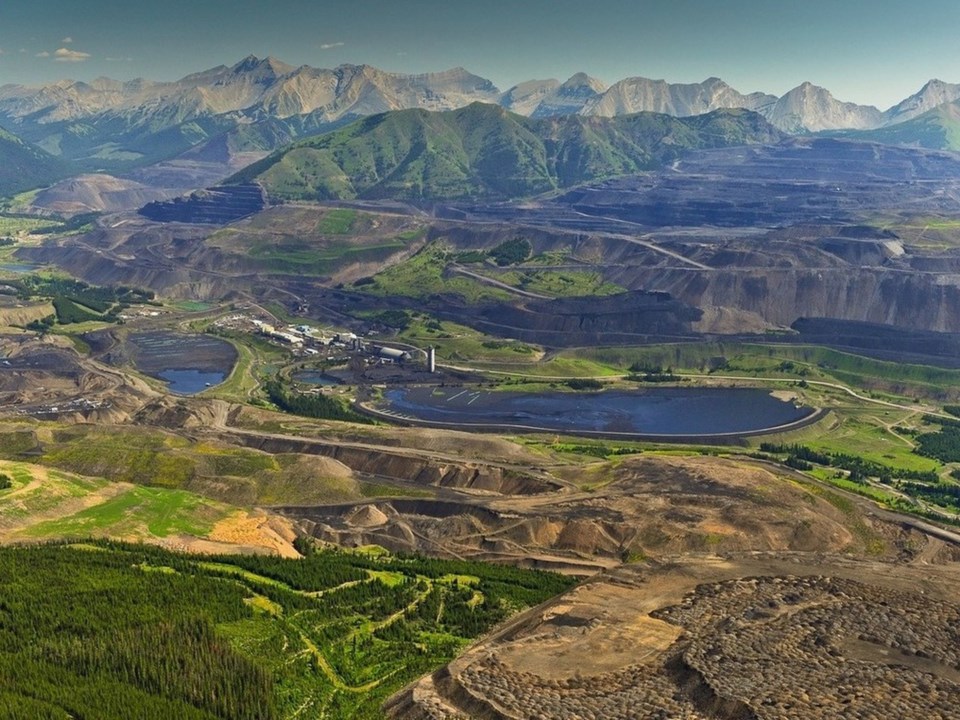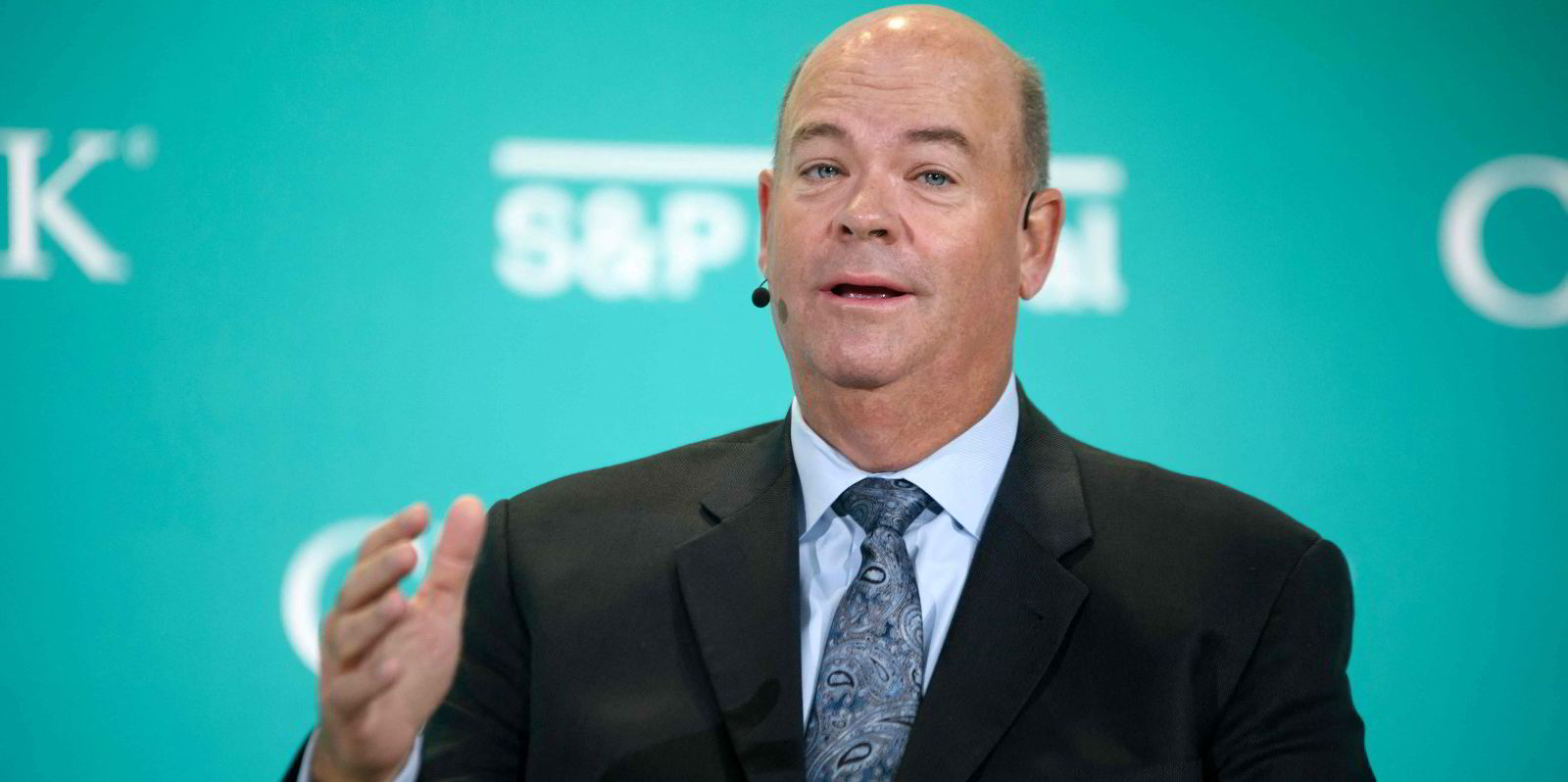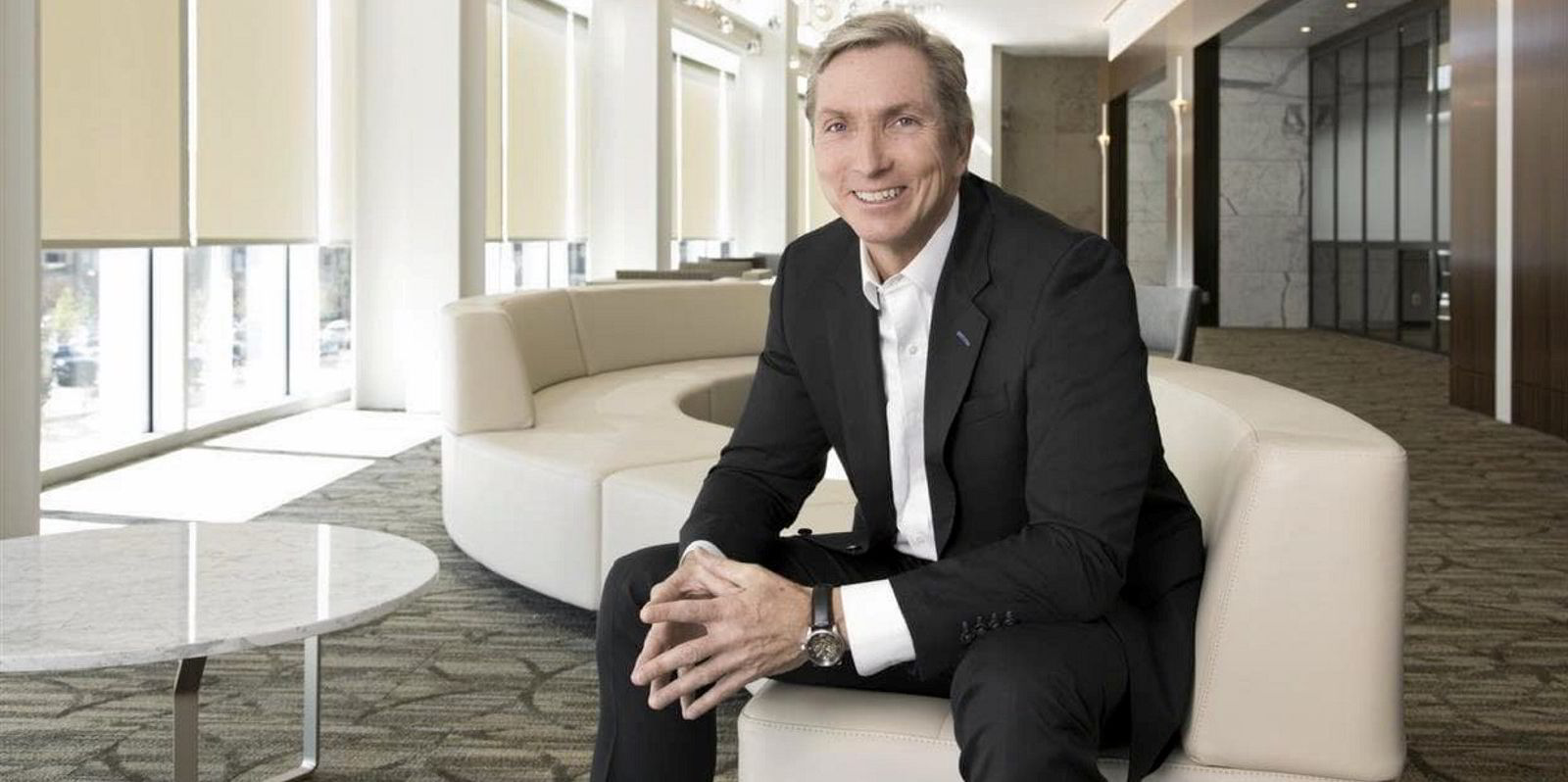Job creation tied to Windsor, Ont., Stellantis EV battery plant compared to 'musical chairs': prof
RIGHT WING BOURGEOIS ECONOMIST
Ian Lee thinks governments will give Stellantis what it wants
because of 'politics' and 'optics'
A Carleton University business professor is casting doubt on the number of jobs that will be added to Windsor's economy by an electric vehicle battery factory.
Ian Lee says the country's unemployment level is the lowest it's been since the 1960s and calls the idea that Ontario is desperate to create new jobs as "nonsense," adding the province is already seeing a critical shortage of workers.
Stellantis and LG Energy Solution will draw many of their employees from other plants that are already operating in the region, he says.
"What's going to happen is these companies are going to be — they're not going to admit this publicly — but they're going to be poaching and robbing and soliciting skilled employees from other companies nearby because they need the workers to work there," Lee said.
WATCH | U.S. economy and new incentives put Canada at disadvantage in Stellantis negotiations, prof says
On Friday, Windsor's mayor circulated a petition for residents to sign calling on Ottawa to finalize the NextStar EV battery plant deal.
Drew Dilkens says it would be "unacceptable" for Ottawa to not close out the agreement, and fulfill financial promises. And that stalled talks between Stellantis and governments have left him feeling "deeply concerned."
Earlier this month, Stellantis halted work on its construction of the Windsor battery plant saying it was looking for "contingency plans," and that Ottawa hadn't kept its negotiation promises. The facility was due to open next year after construction began in 2022.
New legislation in the U.S. allows for unprecedented incentive offers for companies, making it extremely challenging for Canada to compete.
WATCH | How a U.S. law contributed to the stalling of the Stellantis plant | About That
Unlike in 2009 when GM and Chrysler were bailed out, Lee doesn't think putting up more money for Stellantis makes sense for the province or Ottawa this time around.
They're going to be robbing Peter to pay Paul. That's not creating jobs.- Ian Lee, business prof
"They need skilled workers. So they're going to go and grab workers from Magna or from GM or from Ford. They're going to be robbing Peter to pay Paul. That's not creating jobs."
"All you're doing is musical chairs circulating the jobs in that economy. So it's not going to produce a net increase in job creation."
Aside from the economic might of the U.S., and Canada and Ontario experiencing a labour shortage, Lee still thinks both levels of government will end up forking over enough money to salvage the deal because of what he calls the "politics" and the "optics" of what's gone on historically in Windsor.
"It's so seductive for a politician, for a leader to say to stand up before the microphones at those announcements … and say, 'I am here to save you, I am producing. I am going to sign billions of dollars to make sure that you are saved."
Instead of forking over more money to save the electric vehicle battery plant in Windsor, Lee says both senior levels of government could be spending "more productively" on things such as critical minerals.
"There's a desperate shortage of critical minerals. And that's what we should be doing. But unfortunately, I think they're going to put it into this plant and match or meet the demands of Stellantis and LG."

The vice president of investment attraction and strategic initiatives for Invest WindsorEssex says he's expecting an answer from Stellantis one way or another later this week.
Joe Goncalves said last week he's heard from U.S. sources that Stellantis is mulling over an existing facility in Michigan that could be transformed into housing a battery module plant.
"I think the company's going to have to make a decision because delaying the construction of the module facility will delay supplying of the vehicle launches — so that it will cost a lot more money to these companies," he said.
"What the mayor is doing [circulating an online petition] is exactly what we need to be doing and we need to be out there in force and pushing this."
Goncalves says over the last 15 to 20 years, Windsor has been struggling to redefine itself, and high local unemployment numbers support that.
In April, Windsor's unemployment rate stood at 6.4 per cent. In March, it stood at 8.3 per cent — the highest rate among major cities in Canada.
"This is a generational opportunity for our community and the mayor of the city and the council. The city saw this opportunity. That's why they made the investments that they made, because they know this investment is just not for today. It's for the next hundred years."
In the automotive supply chain, and sector as a whole, Goncalves says he thinks Windsor can become a hub for battery manufacturing.
"Whether it's mines and minerals and different innovations, and in different supply chain companies from battery cases … We can be the leaders, but we have to be brave about it. We have to take a leap of faith.
Samsung, Stellantis to Invest $2.5 Billion in
U.S. EV Battery Plant
By Alan Patterson 05.27.2022
Samsung SDI and Stellantis this week have agreed to invest more than $2.5 billion in an electric vehicle (EV) battery plant in the car manufacturing rustbelt of the U.S. as the nation’s automobile industry starts to electrify.
Slated to start production in 2025, the Kokomo, Ind., plant will have an initial annual production capacity of 23 gigawatt hours (GWh), with an aim to increase to 33 GWh in the next few years.
The total investment would increase to as much as $3.1 billion if demand for Stellantis EVs takes off. Stellantis CEO Carlos Tavares said in an interview with CNBC that he expects a shortage of EV batteries to emerge during the 2024–2025 period, accentuated by scarcities of raw materials for batteries that will slow adoption of EVs by the 2027–2028 timeframe.
“Just under one year ago, we committed to an aggressive electrification strategy anchored by five gigafactories between Europe and North America,” Tavares said in a press statement on the Indiana joint venture. “Today’s announcement further solidifies our global battery production footprint and demonstrates Stellantis’ drive toward a decarbonized future.”
The Indiana EV battery joint venture comes at the same time as the world’s largest electronics contract manufacturer, Foxconn, agreed to revamp a plant in the neighboring state of Ohio for production of electric trucks.
Foxconn agreed this month to buy the former General Motors factory in Lordstown, Ohio, for $230 million. The Taiwanese company, which is considered the largest manufacturer of iPhones for Apple, plans to build EVs for clients that include electric truck maker Fisker.
The battery plant is projected to create 1,400 new jobs in Kokomo and surrounding areas. Tavares called Kokomo a city that holds “a rich and long history for our company”. Stellantis, which makes Chrysler, Dodge, and Ram vehicles in the U.S., last year announced plans to spend nearly $230 million to retool three factories in the city to make transmissions that can be used with gas–powered engines, as well as hybrid systems.
Samsung SDI will provide battery and electronic materials technologies as a member of the joint venture with Stellantis.
“We have secured a solid foothold in a rapidly growing North American EV market through the joint venture with Stellantis,” said Yoonho Choi, CEO of Samsung SDI. We will contribute towards meeting the climate change target.”
Samsung SDI will use its PRiMX technology to produce EV battery cells and modules for the North American market. Samsung launched PRiMX as a premium battery brand and an industry first last year at CES 2022 in January.
As part of its Dare Forward 2030 strategy, Stellantis aims for global annual battery EV sales in 5 million vehicles by 2030, reaching 100% of passenger car sales in Europe and 50% passenger car and light–duty truck sales in North America. Stellantis also aims to increase battery capacity by 140 GWh to approximately 400 GWh, to be supported by five battery manufacturing plants together with additional supply contracts.
The announcement is part of the company’s long–term electrification strategy to invest $35 billion through 2025 in electrification and software globally.
Lithium-Sulfur Batteries
Lyten's batteries do not use nickel, cobalt, and manganese and could power future Stellantis models
by Brad Anderson
May 26, 2023 
Stellantis’ corporate venture fund has announced an investment in Lyton, a battery manufacturer based in Silicon Valley that has developed innovative new lithium-sulfur batteries and is also a pioneer of three-dimensional graphene.
It is unclear how much Stellantis Ventures has invested in Lyten but what we do know is that the company’s lithium-sulfur batteries do not use nickel, cobalt, or manganese. This reduces the carbon footprint of the batteries by approximately 60% from traditional lithium-ion batteries. Lyten can also source the raw materials for its batteries in North America and Europe.
“We are delighted that Stellantis Ventures, as the venture investment arm of a global automotive innovator, has demonstrated a strong belief in our company and our Lyten 3D Graphene™ decarbonizing supermaterials,” president and chief executive of Lyten, Dan Cook said.
Read: BMW And Stellantis In Talks With Tesla Supplier, Panasonic, Over New Battery Plants

Lyten’s innovative 3D graphene takes the form of a tunable decarbonization supermaterial engineered from natural gas. It is significantly more chemically and electrically reactive than traditional two-dimensional graphene. The company’s lithium-sulfur batteries and 3D graphene materials are initially being produced at a 145,000-square-foot campus in Silicon Valley.
“Having recently visited Lyten together with our CTO Ned Curic and our head of Stellantis Ventures, Adam Bazih, we walked away impressed by the potential of this technology to help drive clean, safe and affordable mobility,” Stellantis chief executive Carlos Tavares said. “Lyten’s materials platform is a key investment for Stellantis Ventures, in line with our Dare Forward 2030 goal to accelerate the deployment of innovative, customer-centric technologies. Specifically, Lyten’s Lithium-Sulfur battery has the potential to be a key ingredient in enabling mass-market EV adoption globally, and their material technology is equally well positioned to help reduce vehicle weight, which is all necessary for our industry to achieve carbon net zero goals.”
Lyten hopes to begin deliveries of its lithium-sulfur batteries and 3D graphene-infused composites for specialty markets later this year. It is unclear when Stellantis will start to use these batteries.
Samsung SDI, Stellantis pick Indiana for US EV
battery plant
The factory, which is expected to cost over $1.6 bn, will produce 23 GWh/year from H1 2025 with the capacity to rise up to 40 GWh
By Hyung-Kyu Kim May 24, 2022
Samsung SDI Co., the world’s sixth-largest battery maker, and Dutch-domiciled multinational automaker Stellantis N.V. picked the state of Indiana as a site for a joint electric vehicle battery plant in the US, Reuters reported on Monday.
Last October, the Samsung Group unit and the world’s No. 4 carmaker, created through the merger between the Italian-American conglomerate Fiat Chrysler Automobiles and the French PSA Group, partnered to build a multi-billion-dollar battery factory in the world’s third-largest EV market.
The South Korean battery manufacturer aims to produce 23 gigawatt hours (GWh) of prismatic battery cells and modules a year at the plant, its first US battery production facility, from the first half of 2025 for Stellantis’ car factories in North America. The output is enough for about 300,000 EVs that can drive 500 kilometers (311 miles) with a single charge.
Samsung SDI and Stellantis plan to expand the battery plant’s capacity to 40 GWh a year with additional investment in the future.

TO BE LOCATED IN KOKOMO
The factory is expected to be built near Stellantis engine, casting and transmission plants in Kokomo, Indiana. Those plants may be converted into EV facilities since the eco-friendly vehicles do not need engines and transmissions, some industry sources speculated.
Stellantis produces the Jeep, Dodge Ram brands in eight assembly plants in the US including ones in Michigan, the home to the US auto industry.
The Detroit News reported Indiana won the investment from Samsung SDI and Stellantis, beating Michigan, as the state provided more incentives.
Stellantis plans to build two battery plants in North America and three in Europe to secure batteries of 400 GWh a year by 2030.
It partnered with LG Energy Solution Ltd., the world’s second-largest battery maker, to establish a joint battery factory in Ontario, Canada, to produce 45 GWh per year with an investment of $4.1 billion. The plant is scheduled to begin mass production in 2024.
Write to Hyung-Kyu Kim at khk@hankyung.com
Jongwoo Cheon edited this article.
Stellantis Will Buy Out Thousands of Hourly
Employees to Cut Costs for EV Making
Adam Ismail
April 26, 2023·
Photo of a Jeep Grand Cherokee L being assembled at Stellantis' Mack Assembly Plant in Detroit.
Stellantis will part ways with thousands of union employees in the coming months, Honda has a plan, and life sure is good for battery-maker LG. All that and more in this edition of The Morning Shift for Wednesday, April 26, 2023.
1st Gear: Stellantis Must Downsize
Electric cars are expensive to make, which is something Stellantis’ Carlos Tavares has been candid about in the past. It’s for this reason that Tavares has been beating the drum about a need to cut costs as the company prepares to launch 25 new all-electric models across its wealth of brands. To that end, the company will shed roughly 3,500 hourly jobs in the U.S. through buyouts and retirement incentives before new contract negotiations kick off with the United Auto Workers union later this year. Courtesy Automotive News:
UAW Local 1264, which represents the Stellantis stamping plant in Sterling Heights, Mich., said in a letter to members that the offers would be made “corporate wide.”
Retirement-eligible workers hired before ratification of Chrysler’s 2007 contract with the UAW can receive $50,000 to leave their job, according to the letter, which Local 1264 posted Monday on Facebook. Employees who have been with the company for at least a year would be eligible for a lump-sum benefit payment, the letter said, without specifying how much that would be.
Workers can sign up for either package from May 6 through June 19. Departure dates are tentatively scheduled for June 30 through Dec. 31, depending on each plant’s needs.
The openings would be filled by workers on indefinite layoff, the letter said.
A Stellantis spokesperson didn’t immediately comment on the plan.
The 3,500-job target would represent about 8 percent of the 43,000 hourly workers who were eligible to collect a profit-sharing check from Stellantis in March.
Of course, Stellantis is hardly alone among the Big Three in this trend. General Motors recently extended “voluntary severance packages” to salaried workers — a move that cut into its first-quarter bottom line as we learned yesterday — while Ford has shed some 3,000 white-collar jobs globally since last summer. Most recently sales for Jeep and Ram, Stellantis’ juggernauts in the U.S., slipped through the first quarter as the Detroit News reported. Jeep in particular saw a whopping 20 percent year-over-year decrease in deliveries over that period.













